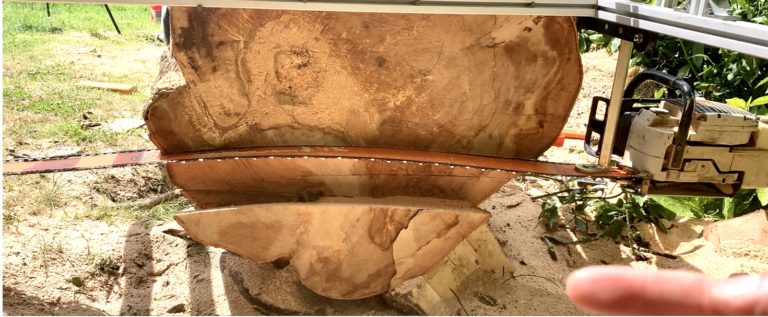
Feel free to contact us if you have any questions or require further information on any our products. >Videos of all products can be viewed on our YouTube channel here.
Top tips and ways to get the most out of chainsaw milling
Rule 1 – Keep the chain sharp – most people require some form of guide to get the chain perfect – tooth length the same, angle the same, depth gauges consistent. Nearly all issues we come across always come down to the chain – you can get away with all sorts of mistakes when cross cutting timber – not so with milling. Unfortunately ‘I’ve used a chainsaw for 30 years’ does not qualify you for much and it is worth considering ‘have I been using chainsaws badly for 30 years?’. On the whole most are not that good at chain sharpening – ripping chain is normal chainsaw chain… if you don’t know what the differences are >read this article here.
Rule 2 – Keep the chain sharp! – a lot of time is taken up by customers calling and the conversation is generally the same ‘I get into the wood 6 inches and it stops cutting’ ‘chain is new so it can’t be the chain’ ‘chain feels sharp..’ ‘my last chain cut 3 logs without being sharpened this chain is faulty..’ ‘I sharpened the chain but it’s still not cutting – it keeps rising up in the wood’. And so the list goes on – 9 times out of 10 if that saw will not cut the wood there is an issue with the chain. First job – change that chain [what do you mean you don’t have a spare chain to hand?! ALWAYS have a spare chain to hand when milling – ALWAYS! And have one for your other saws as well.
Rule 3 – Know how a chain works >watch this video here on the main principles of chain sharpening.
Rule 4 – Rest the saw down the log – particularly in hot conditions let the saw idle for 30 seconds every 1m you cut – this allows the saw to get rid of some of the heat build up.
Rule 5 – At the end of the log do not switch saw straight off. Remove from log – gently rev and allow chain to remove any sawdust trapped in the bar. Allow saw to idle 1 minute before you start cutting again or before you turn off.
Rule 6 – Do not run your saw out of fuel – always make sure there is fuel in the tank – if you keep allowing the saw to run out of fuel completely you will have idling and other issues later in the saw’s life.
Rule 7 – Do not force the mill to cut – it should cut without undue pressure so if it is not cutting then pull it out the log and assess the reasons. And guess what would be the main reason? Chain – the chain is not cutting correctly. It may have been cutting ok before – now it isn’t.
Rule 8 – Do not mix and match drive sprocket/rim, bar, chains – the drive sprocket, bar and chains you use all wear together. IT DOES NOT SAVE MONEY by mixing and matching new with old. So you tend to replace them TOGETHER ie. if you buy a new bar and new drive rim then DO NOT use your old chains on this nice new set up. Most of the bar issues we see [at least 9 out of 10] are where new items are run [watch this video here] with old items. >Read this article on sprocket care here.
Rule 10 – DO bed your bar in correctly – slapping a new bar and chain on and getting straight into it can often lead to increased premature wear – lube up the bar, give it half a chance to run in and >watch this video here on bedding in the bar and chain.
What type and make of mill?? There’s loads to choose from!
Let’s answer this in brief – you get what you pay for with mills. The cheap and cheerful knock offs on ebay and our own Eco mills will do the job. Buy a cheap chainsaw off ebay – it’ll do the job. Are the materials going to be as good? No. Will it last as long? No. Will it have the same functionality? No. Will it have the same performance? No.
But for some a cheap saw and mill works fine for what they need it for. Is it fine for you? We can’t answer that for you – but let me repeat myself – you will get what you pay for. If you think you will get Panther mill quality with cheap ebay prices – no way, not even close. You can buy x8 saws on ebay for the same as an MS500i – so why buy an MS500i? Because for you you’d rather pay the extra to get the extra.
What size lumber mill attachment do I need?
How big are your trees? How wide of a board do you want to cut? What size chainsaw do you have? These are questions only you can answer. The Alaskan style chainsaw mills will clamp to any bar and you tend to lose 8″ off the cutting width ie. a 48″ bar on a 48″ chainsaw mill will cut to a max of 40″. NB – this does not meant it will cut a 40″ log. Logs are bendy and lumpy so you need at least another 4″ of wriggle room in order to guide your mill around these lumps and bumps.
What is the max size bar I can put on my bar? What will my chainsaw bar pull?
I hate this question, because there is no set answer! It is NOT about your chainsaw – it is about YOU. If you have a super experienced and knowledgeable chainsaw user [Test – you don’t know your chain size, the different chains types, the difference between a rim or spur sprocket you are a very long way from being one] then he/she can mount a much longer bar on their saw and use it with success. Same chainsaw but different user who has used a saw for a few years but doesn’t really know all that much and maintenance is poor – they have the same saw BUT if they try and go longer they come unstuck and potentially damage the chainsaw [and blame everyone around them as well as the old phrase ‘saws just ain’t made like they used to be’… you could almost put a song to that….]
You can go lo pro – and find info about that below – this def helps putting a longer bar on. But it really comes down to YOU not the chainsaw. So it is YOU that needs to decide what you can do – not us. And please don’t ask us this question if you’re the sort that asks advice, comes unstuck, then looks to re allocate the blame ‘my local saw shop said no way would they recommend this length bar, you mis sold this to me!’. If your local saw shop is so wonderful why not ask them in the first place! Note – I personally use all the stuff we sell – we’re not some group of box shifting pen pushing bureaucrats [not all the time anyways] and so if you are wanting advice then don’t blame us if things go awry. Detect a large note of bitterness here? You should! These occasions make me pretty miserable I can tell you… We are here to sell stuff and give advice but note – we cannot EDUCATE people. There is a line between advice and education – we can give advice if asked but education is over to you. Then you make a decision of what to buy and you take responsibility yourself for that decision.
Another point here – don’t rely on mates or other ‘experienced’ users who are free with their vast knowledge and even more free dispensing it. Don’t trust them unless they can back up their advice with evidence. Do the work and research yourself. Teach yourself from YouTube and working through all the tedious videos that everyone else can’t be arsed to watch. No, not the ones taking out a big top on a windy day with thrash metal playing in the background. That is for most of us a ‘1% of your time’ activity in this industry. It’s the boring, dull stuff you need to watch and no one will think you are any sort of a hero after you watch it. MOST mistakes are user error from what we see – and I still make plenty myself… poor maintenace being in a rush, not setting up correctly, taking short cuts [I’ll tension the chain on the next cut..] this is what causes the issues on the whole. They are preventable and as long as you think you don’t know best and keep learning and researching – likely you will be ok.
What kind of chainsaw do I need?
The MS880MS881 is currently the best option for larger logs. It’s torque and power allow you to use up to enormous 84″ bars (longer bars benefit from using the 27RX hyper skip ripping chain). Other 90cc saws such as the MS661 or Husqvarna 395XP are also great for milling logs up to a maximum of 36″. Smaller saws will work but are less efficient and some of the bars on the smaller saws are too narrow to mount the mills clamping brackets. But with a smaller mill like the >Panther Cub you can still plank timber up to 16″ or so.
How much power must my chain saw have?
The general rule is, the more power your saw engine has, the faster the cutting speed. Almost any engine that runs will cut, it just depends on how much time you want to spend milling your lumber. Chain sharpness is another huge factor. You can move onto lo pro set ups to allow longer bars or skip link chains.
Can I go lo pro? You will need to check/change the drive sprocket or rim to do so if not already running lo pro. Help what chain am I running? >You need to read this page here and ID your setup.
Pros of lo pro ripping chain:
- Takes a slightly narrower kerf (only 15% less than a 3/8 standard chain)
- Used on a lot of mills as the best chain
- Reduces strain on the powerhead
- Increases milling speed by approx 20%
Cons of lo pro ripping:
- Increased chain stretch even with Stihl PMX
- More expensive
- Chain has less strength than standard 3/8 and .404 – so hit something hard and there is more chance of chain breakage. Heavy handed operators will struggle as there is less margin for sharpening and milling errors
- Less stay sharp ability than the larger chains – larger chains can take more punishment than lo pro chains
How do I make first my first cut?
With the Alaskan Mill Mk IV or Panther Mills you need to have a flat surface for the mill to ride on to get a flat even cut. You can nail a 2×10 to the top of the log or you can buy our >Panther First Cut system. Or use a ladder. All have different pros and cons but bear in mind we designed the Panther first cut system using 12 years milling experience.
Can I use my regular chain for ripping?
>If you have questions on ripping chain please see our full page here – it will answer any questions you may have. Already read that? Ok >watch the vids here then..
Your regular stock chain on your saw works fine when it is sharpened correctly and if it is a micro chisel or semi chisel chain. Despite numerous mentions the way you sharpen your chain is EVERYTHING when it comes to milling success. Angles have to be the same, tooth length has to be the same, depth gauges need to be consistent. Buy a bench grinder or a guide like the >precision grinder as very very few people can get a chain perfect by eye.
Do I need an Auxiliary Oiler Kit?
Chain saws deliver oil to the drive links via an oil hole in the top of the bar at the power head end of the bar. Oil has to travel around the nose of the bar (where some will be flung off) and onto the cutting side of the bar. For smaller bars and small cuts, this system works fine. For larger bars you can get the >auxilary oiler kit. Got a Panther mill? In which case the >Panther Oiler kit for this is found here. It’s not essential but yes it helps but like most things there are pros and there are cons – we find it detracts from milling and it makes the mill heavier and more cumbersome but it does help reduce friction on the cutting face of the bar. Sometimes we use it ie. got a couple of big lumps to through saw, am sometimes we don’t ie only got a few cuts to make.
How thick can chainsaw mills cut?
With all our mills we sell you can cut boards as thin as 1/2″ (1.2cm) and as thick as 13″(33cm). To cut even wider on the Alaskan Mill you can buy the >extra long uprights found here which will allow you to cut to 28″(71cm). Setup and make your first cut, remove this first slab, then use the >Granberg Mini-Mill to edge the log. Oh you’re on a budget? >Then try the Eco Vertical Mill found here. You got $ and you want the best? Ok that’ll be the >Panther Intersect in that case.. This will give you a three sided cant from which dimensional lumber can be cut. Alternatively your main Horizontal mill can be used for all of the cuts in various ways; Lower the mill and make a second parallel cut, then roll the log 90 degrees and make a third cut, thus giving you a three sided cant. If your mill is not wide enough to make the second cut as described, the log can be progressively rolled and the sides removed to reduce the diameter, so that the mill can fit across the log. However this is a relatively cumbersome and time consuming method of doing things and no doubt you’ll want to get a vertical mill at some point..
Stihl chain or Oregon chain – which is the best? What about these new Panther chains? Ok listen carefully – as much as it’s neat and tidy to say ‘this one is the best, that one isn’t’ life just doesn’t work like that. Which is the best car? the best wife? the best husband? the best house? Can you answer any of these easily – no you can’t – it’s a complex mix of different variables that vary with the individual person. A better question to ask is ‘What chain is best for me’ and the answer to that is to buy one of each. Compare them – and stick with that. Don’t listen to your mates who know everything – because no one does and you are not them! Use your own judgement and feedback and go with that. Because the one that works best for you [and you are happy with price] – that’s the best one. It’s a question you can answer but we can’t! For myself I am using only the Panther chains now – but that’s because they are our own brand and I want to test them myself, make videos on them, improve them etc. And they are close enough to Stihl and Oregon [and some say better] for me not to want to use the others or feel I am missing out on performance.
How fast can I rip lumber?
This question has no answer! How large is your saw? What timber are you cutting? What condition is your bar in? How well is your chain sharpened?… All these have a bearing on how fast you can cut. Chainsaw milling should feel smooth and progressive – if it does not more than likely poor chain sharpening is to blame. Have we already said that 10 times already? Maybe it’s because we see this as being the main cause of all cutting problems.
But could it be the mill? Could it be the rails? Could it be the saw… Check the picture below – notice the bar? This was deep cutting on an experimental set up. Guess what – it was still cutting pretty smoothly all down the log. Yes even with this much distortion it was still cutting fine. We’ll say it once and keep saying it until we are getting through – pretty much ALL cutting issues are down to the chain. Even if the mill is made from rusty angle iron by your Uncle Bob – results will be fine as the actual mill does not effect the cut you get – the drive rim/sprocket bar and chain do.


 text or whatsapp us
text or whatsapp us  orders@chainsawbars.co.uk
orders@chainsawbars.co.uk
 sign me up
sign me up basket
basket